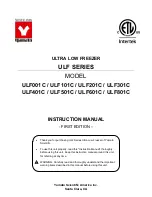
13
0800 422 274
NZ
Other Useful Information
Defrosting the freezer
• For efficient operation and minimum energy consumption, defrost the freezer
compartment when the frost on the freezer walls is building up; do not let frost build
up to more than 3–4mm thickness. Preferably, choose a time when your stock of
frozen food is low. Then follow the simple steps below.
• Turn the temperature control to the minimum position, unplug the freezer and
remove the food and storage basket. (Keep any frozen food temporarily in a fridge
or cooler bag to keep defrosting to a minimum.)
• During defrosting, any ice and frost that has accumulated will melt into the freezer
cabinet. To drain the water, you will need to open two plugs to the drainage hole,
one is located at the bottom of a side panel (Fig.2) and the other one at the bottom
of the freezer cabinet (Fig.3).
• Place a shallow tray and some dry towels
underneath the outer drain plug for the
water to drain into. Then slightly pull out
the plug and rotate it 180 degrees (Fig.4)
so the water can flow out the hole.
• Defrosting usually takes a few hours. To
defrost faster keep the freezer lid open.
• Check the tray occasionally so the water
does not overflow.
• Wipe any remaining water out of the freezer cabinet with a dry, soft cloth.
• When done, push the drain plug in and also re-plug the drain plug inside the freezer
cabinet.
• Clean and/or dry all interior freezer surfaces thoroughly, then turn the freezer
temperature control to the desired setting and plug in the freezer to restart it.
WARNING!
To reduce the risk of electric shock or injury, always switch off the appliance and
disconnect it from the power supply before defrosting or cleaning it.
Fig.4
Fig.3
Fig.2


































